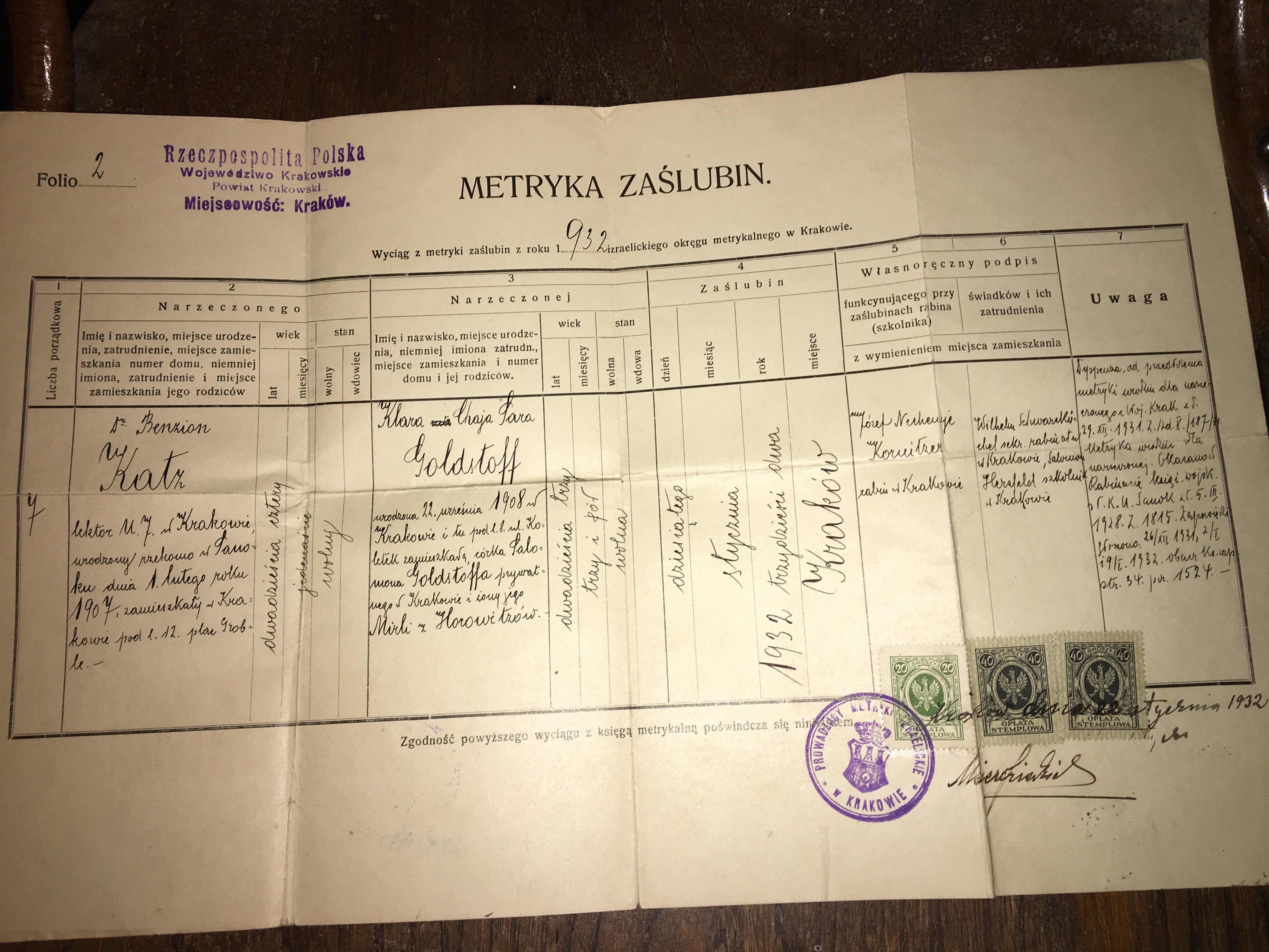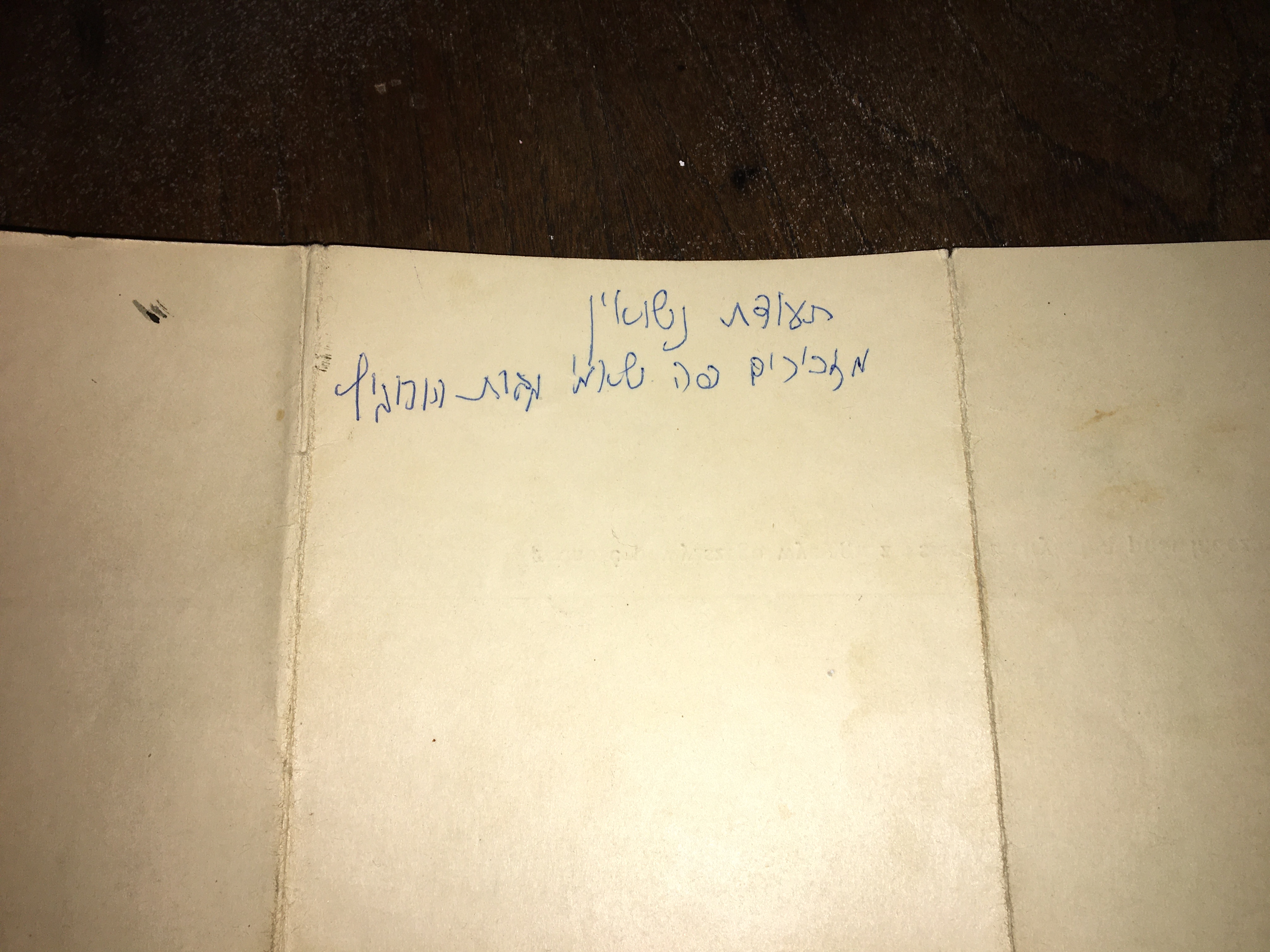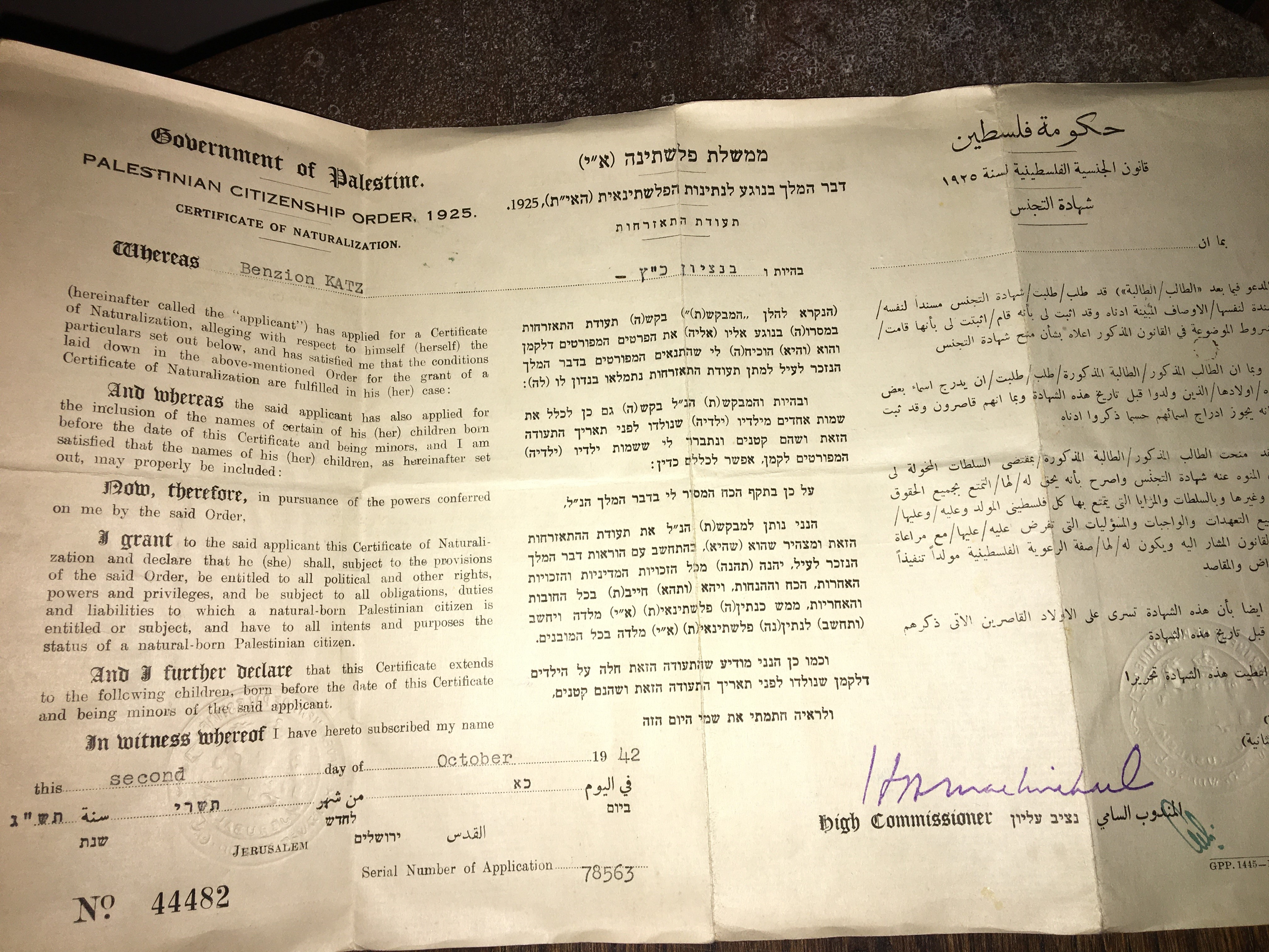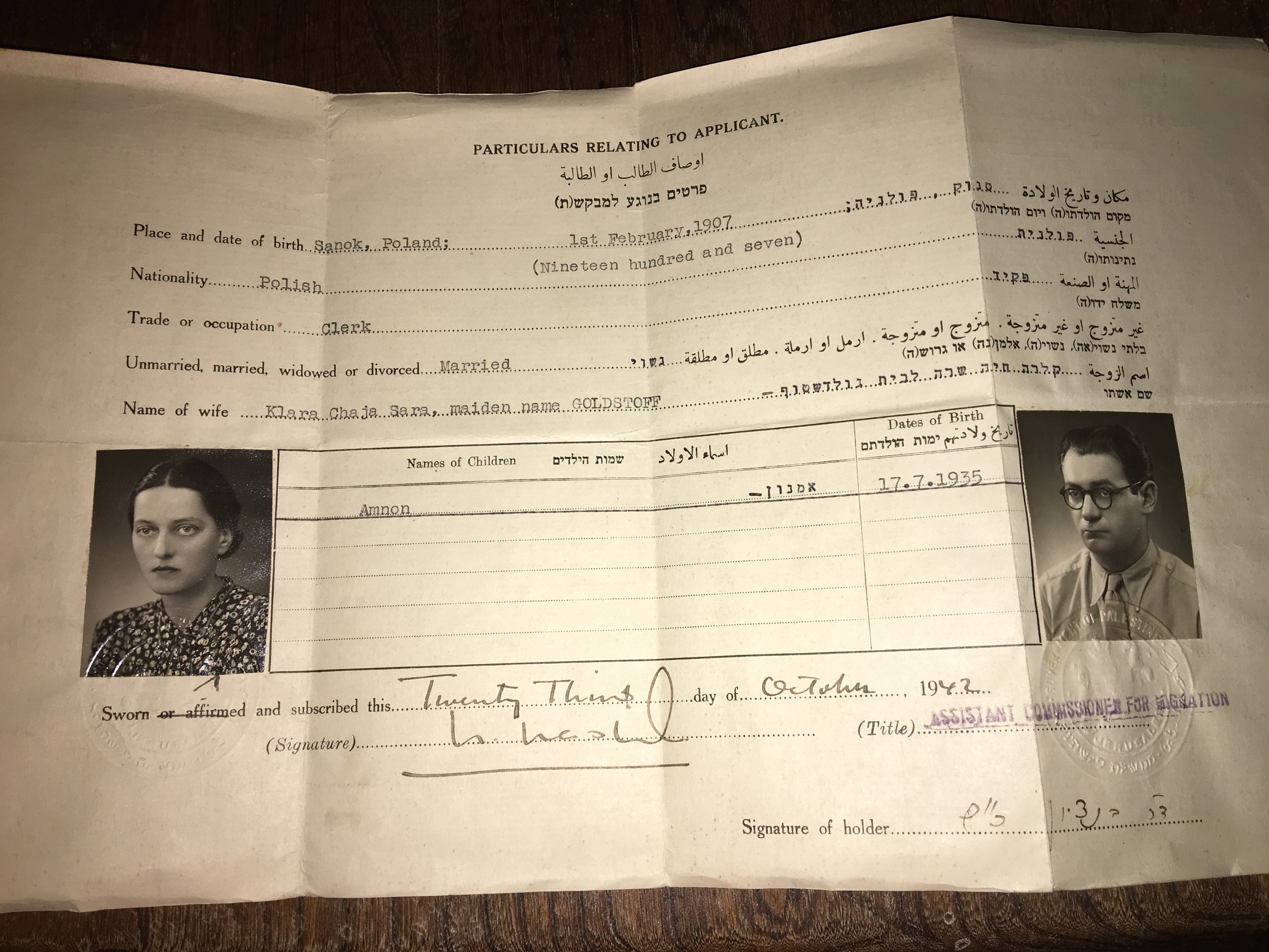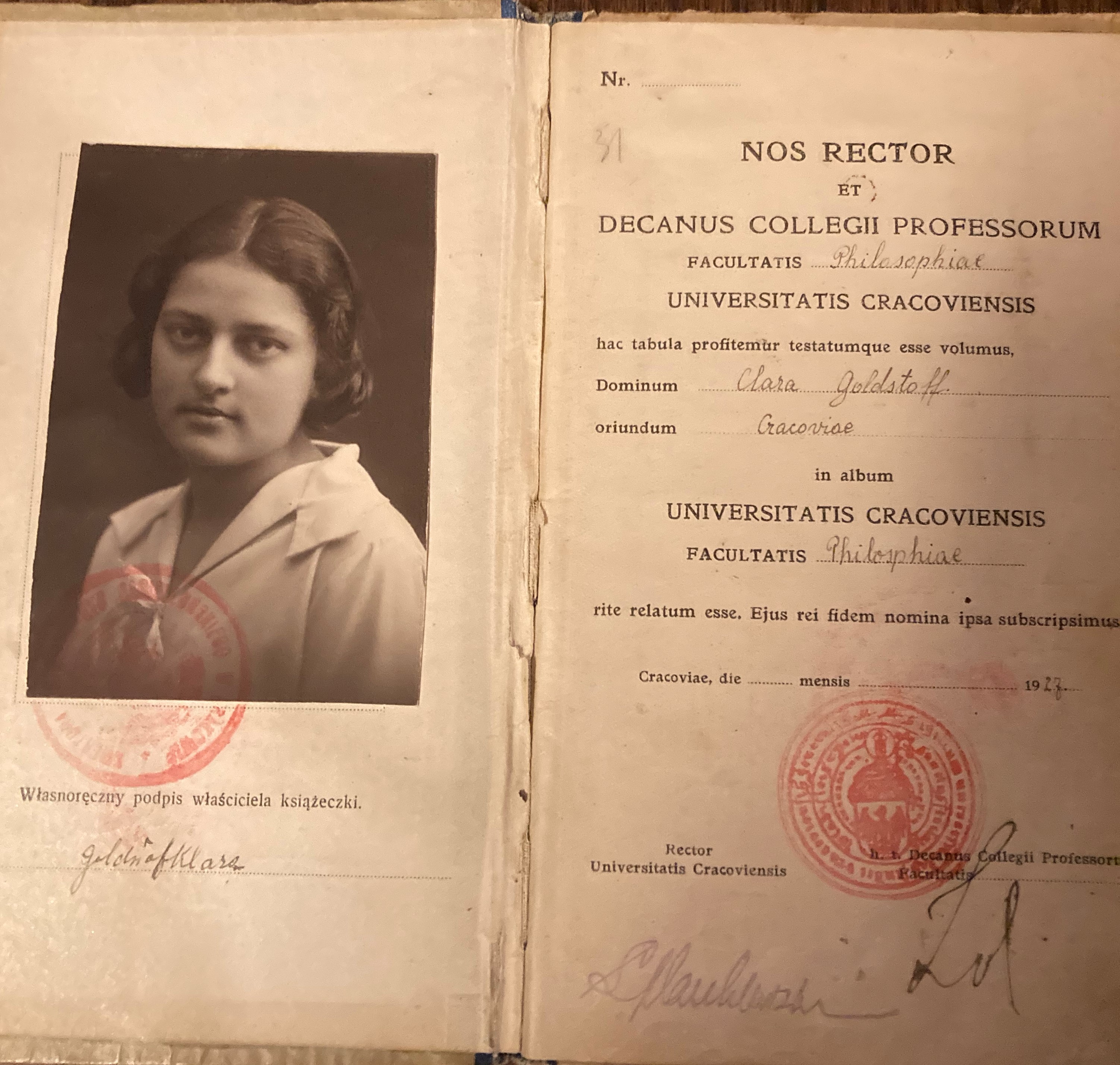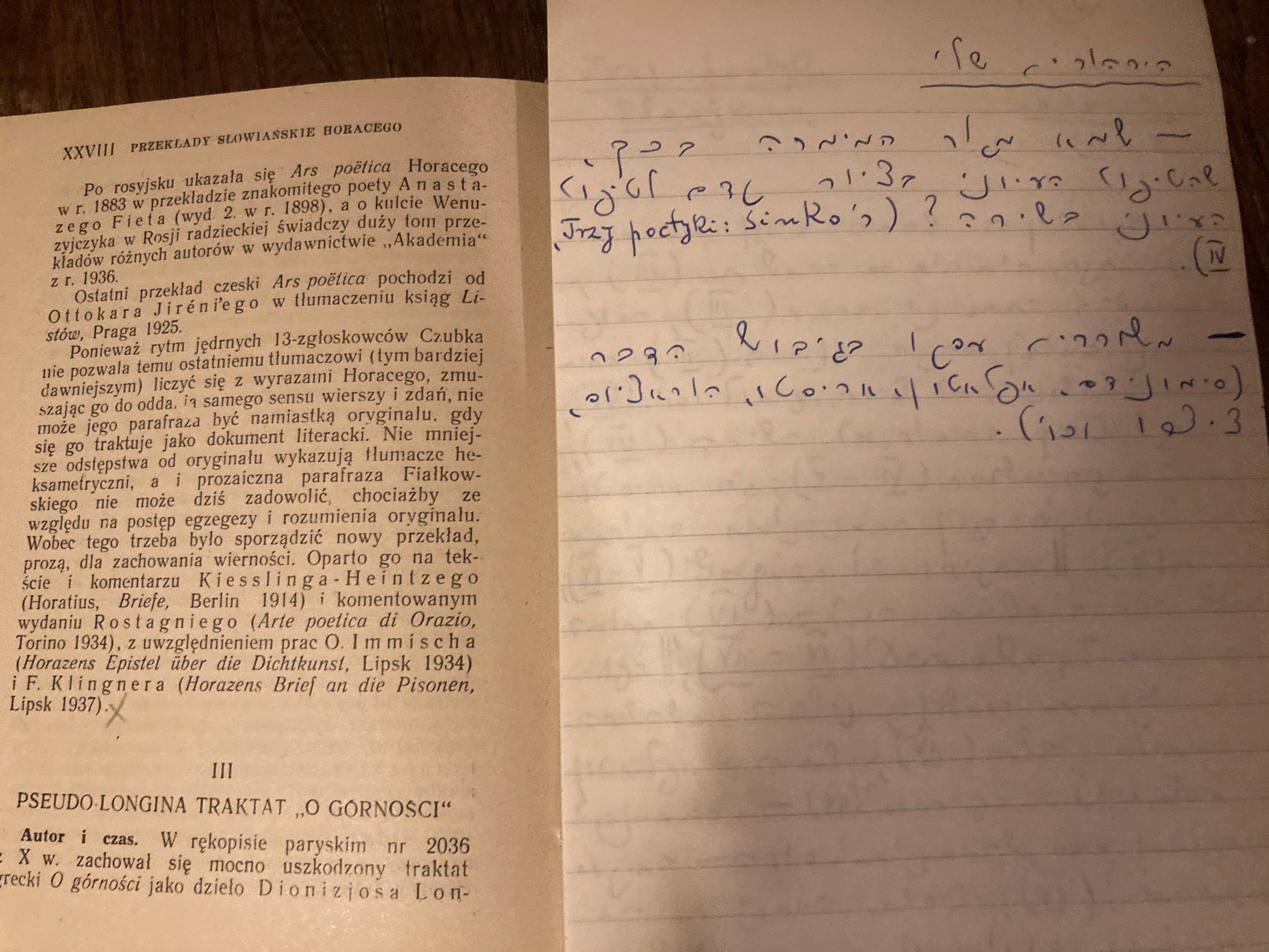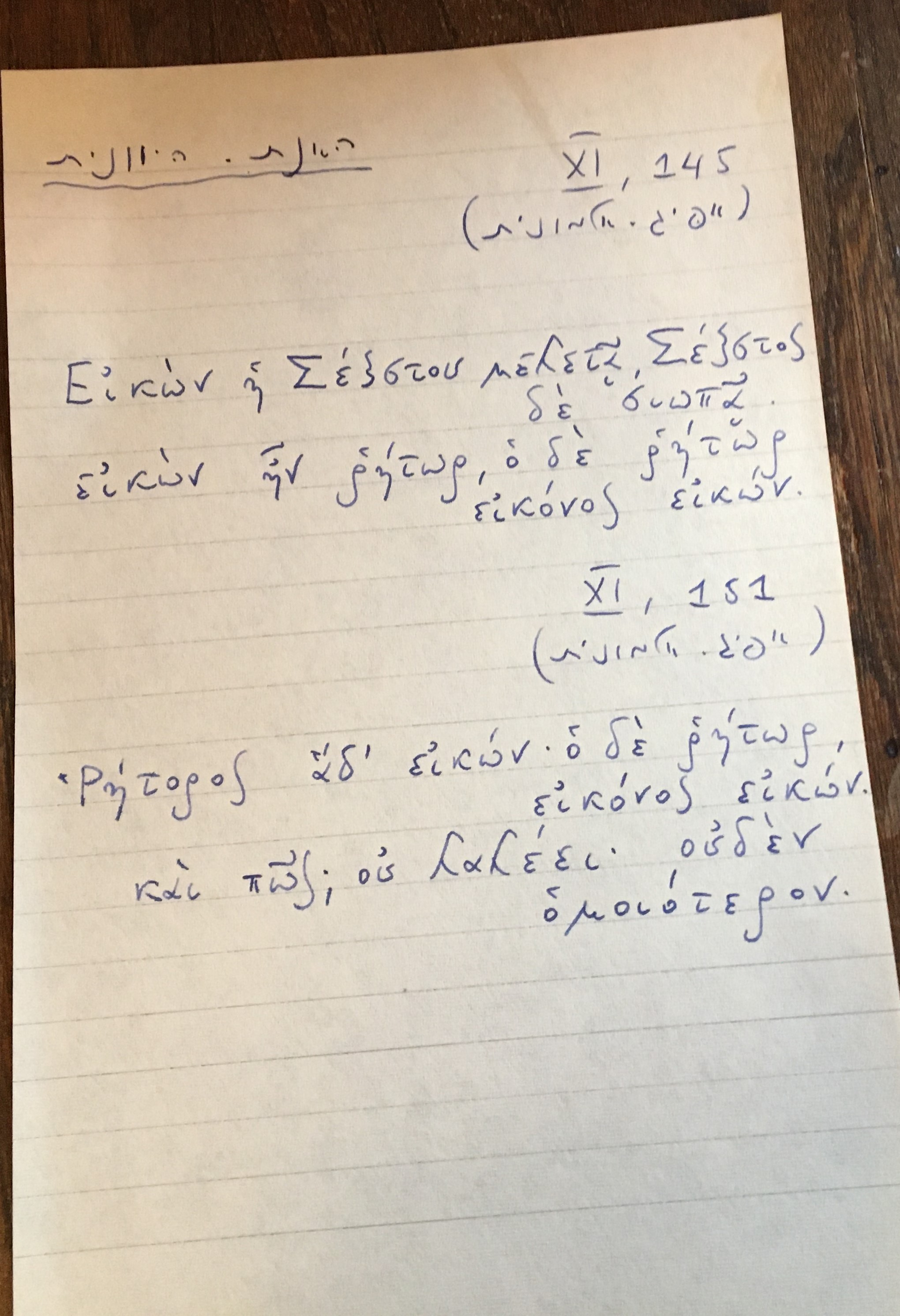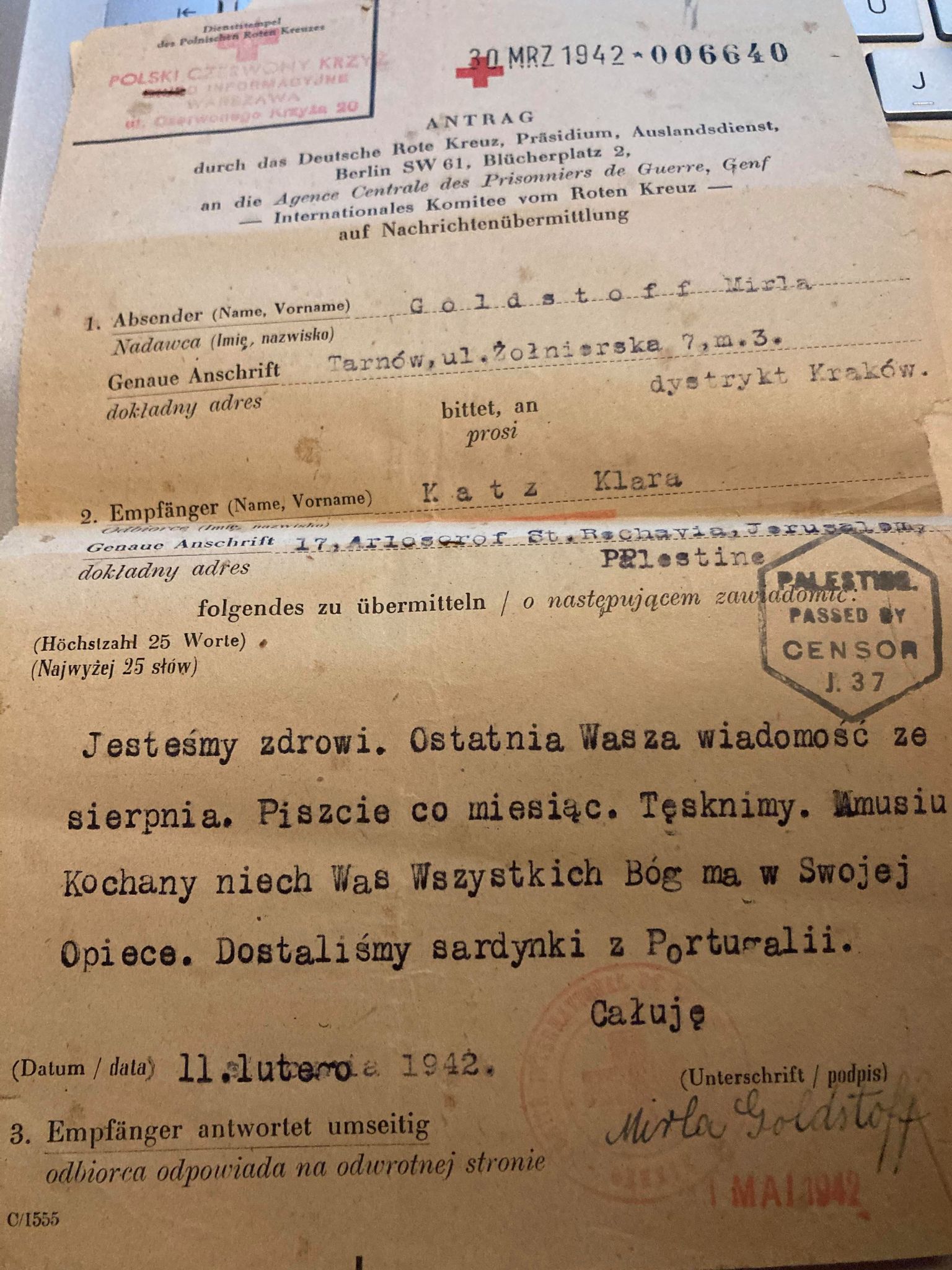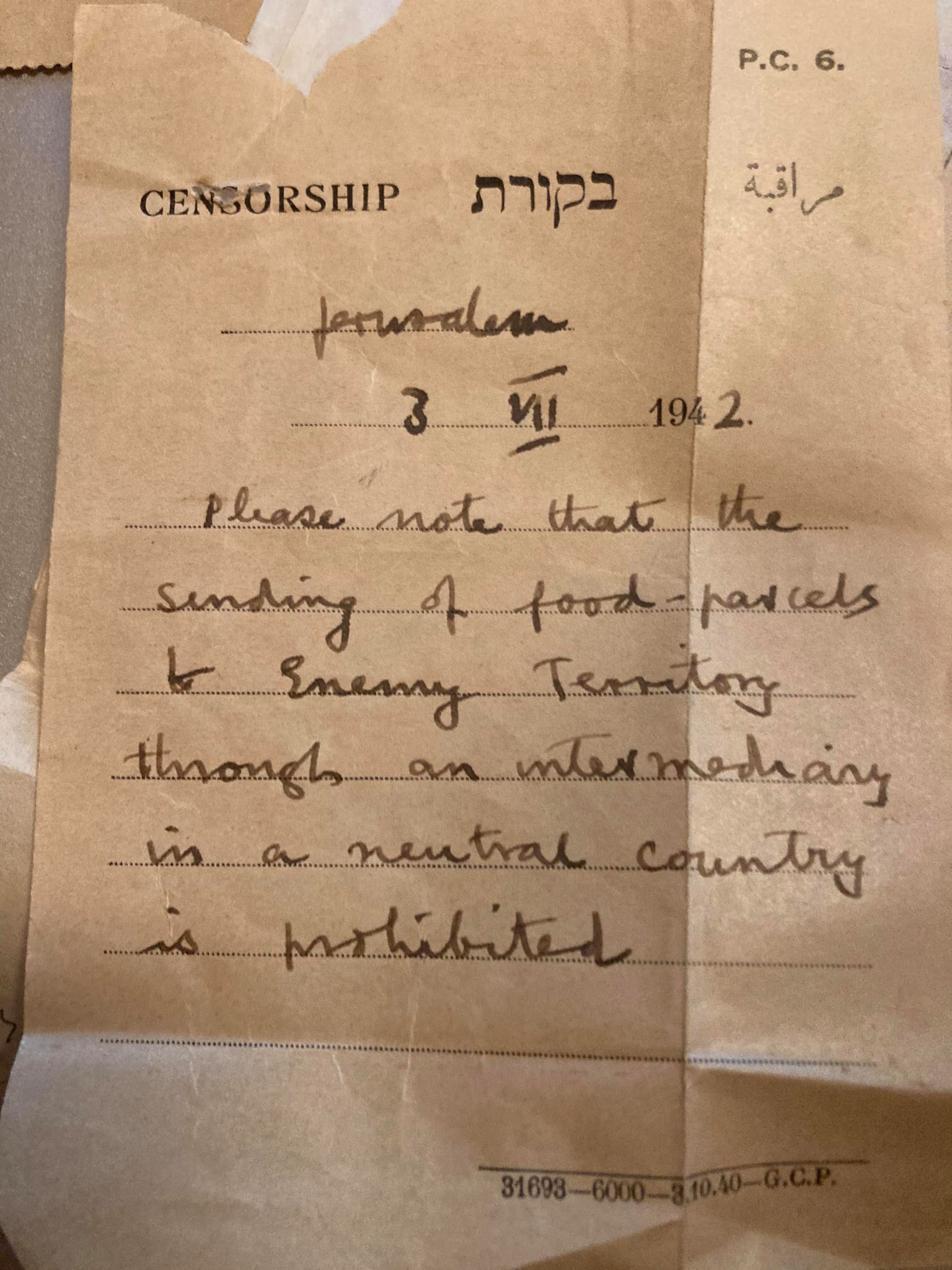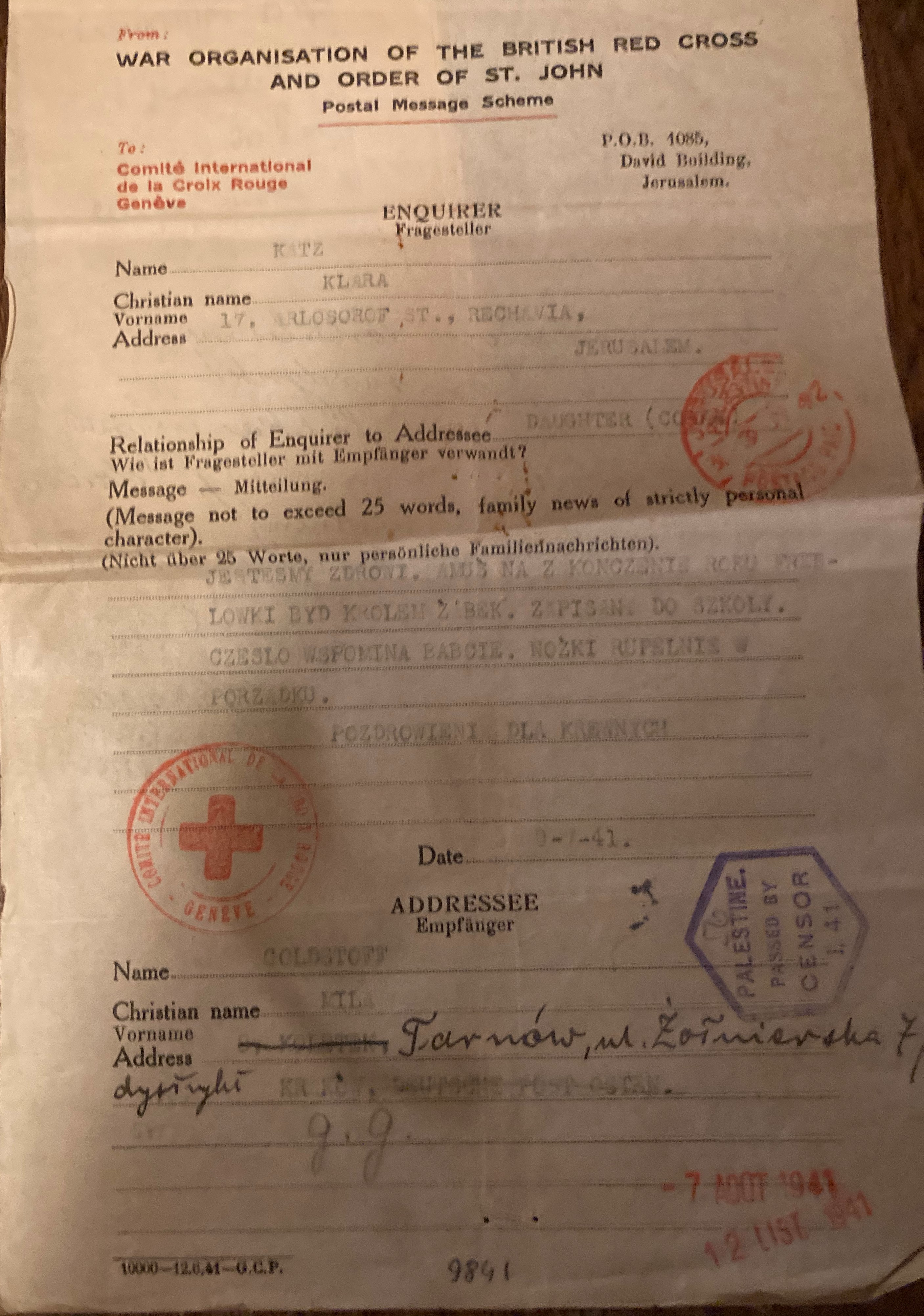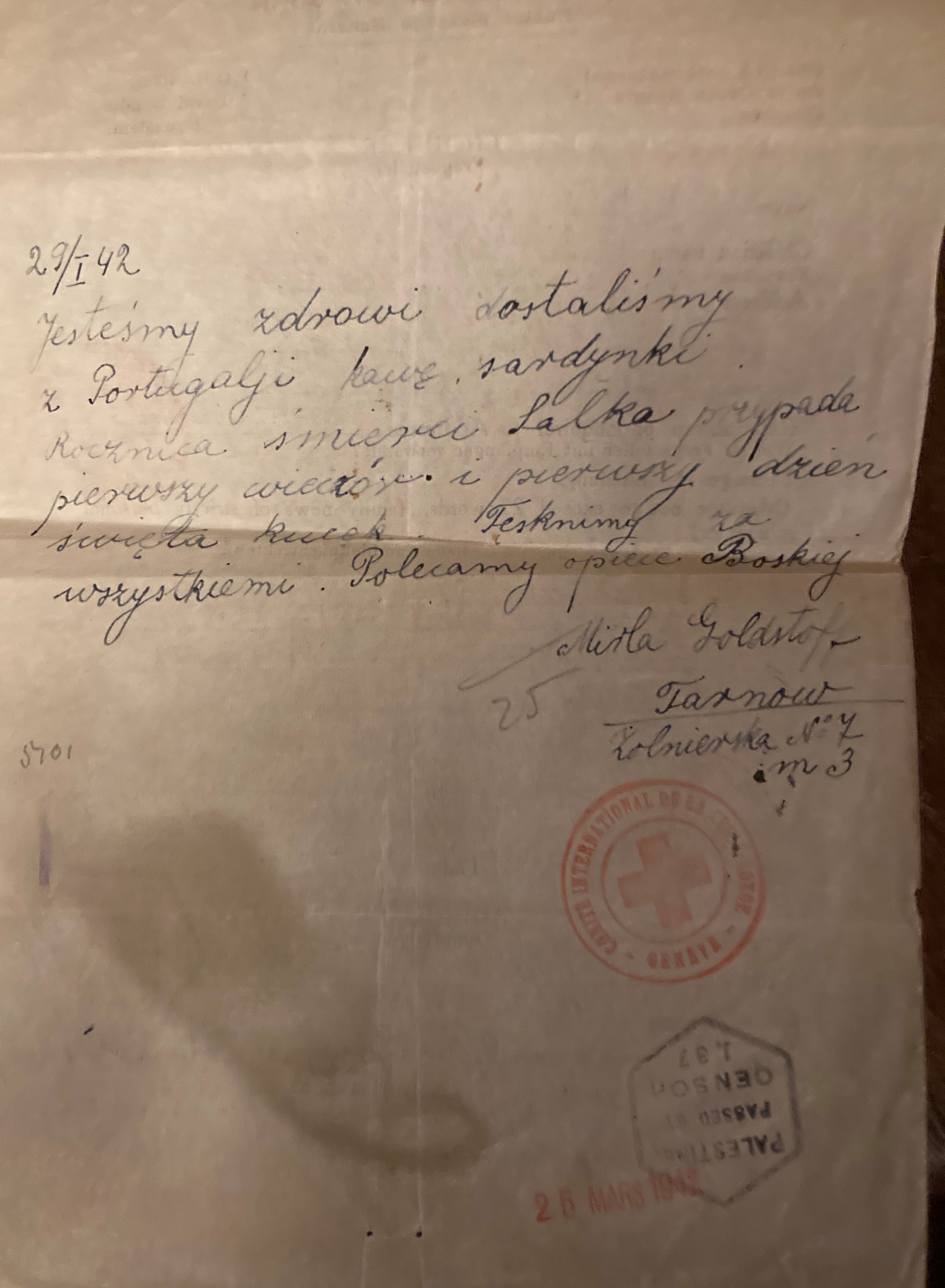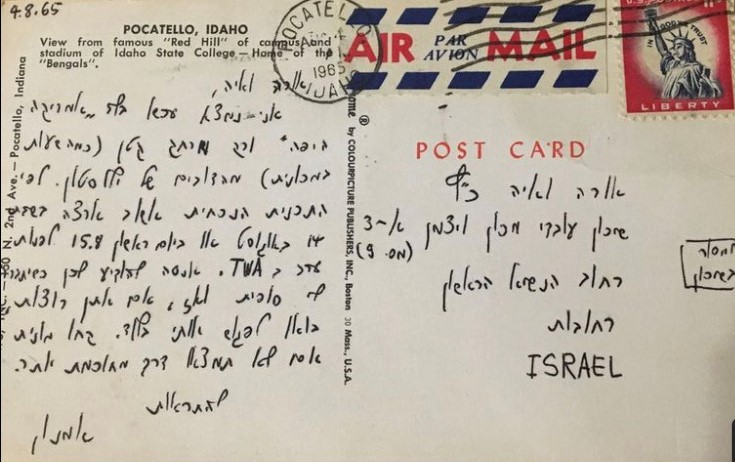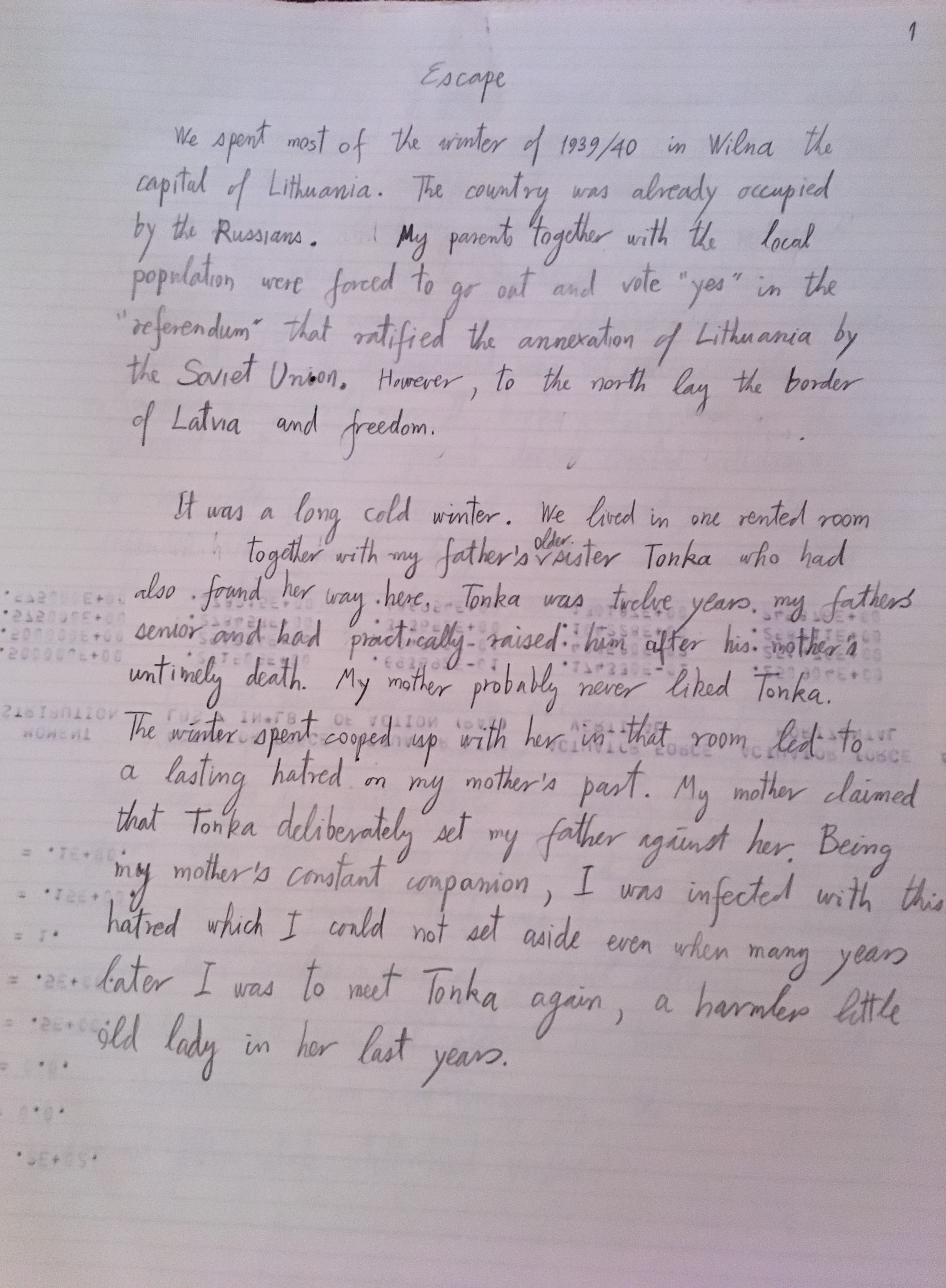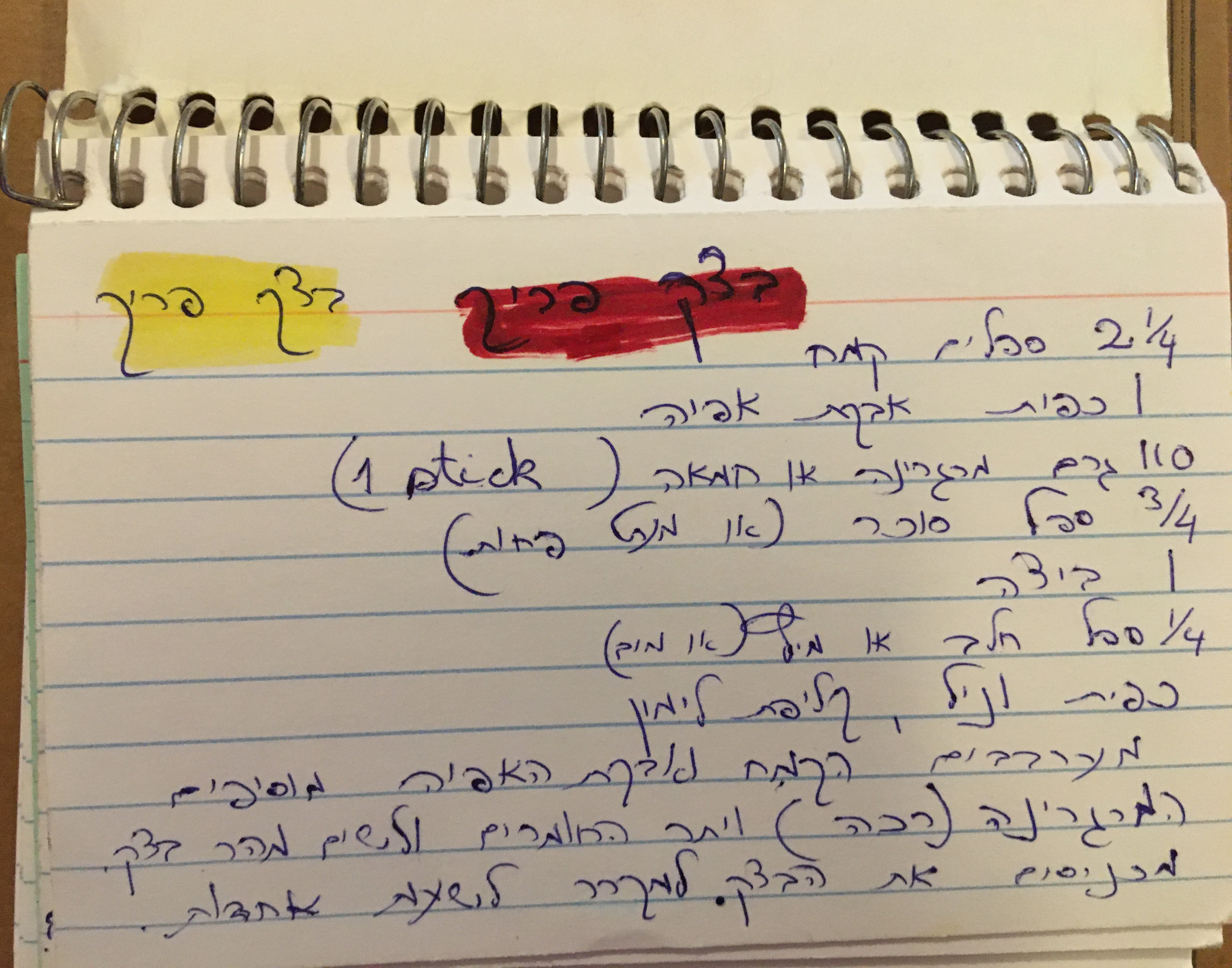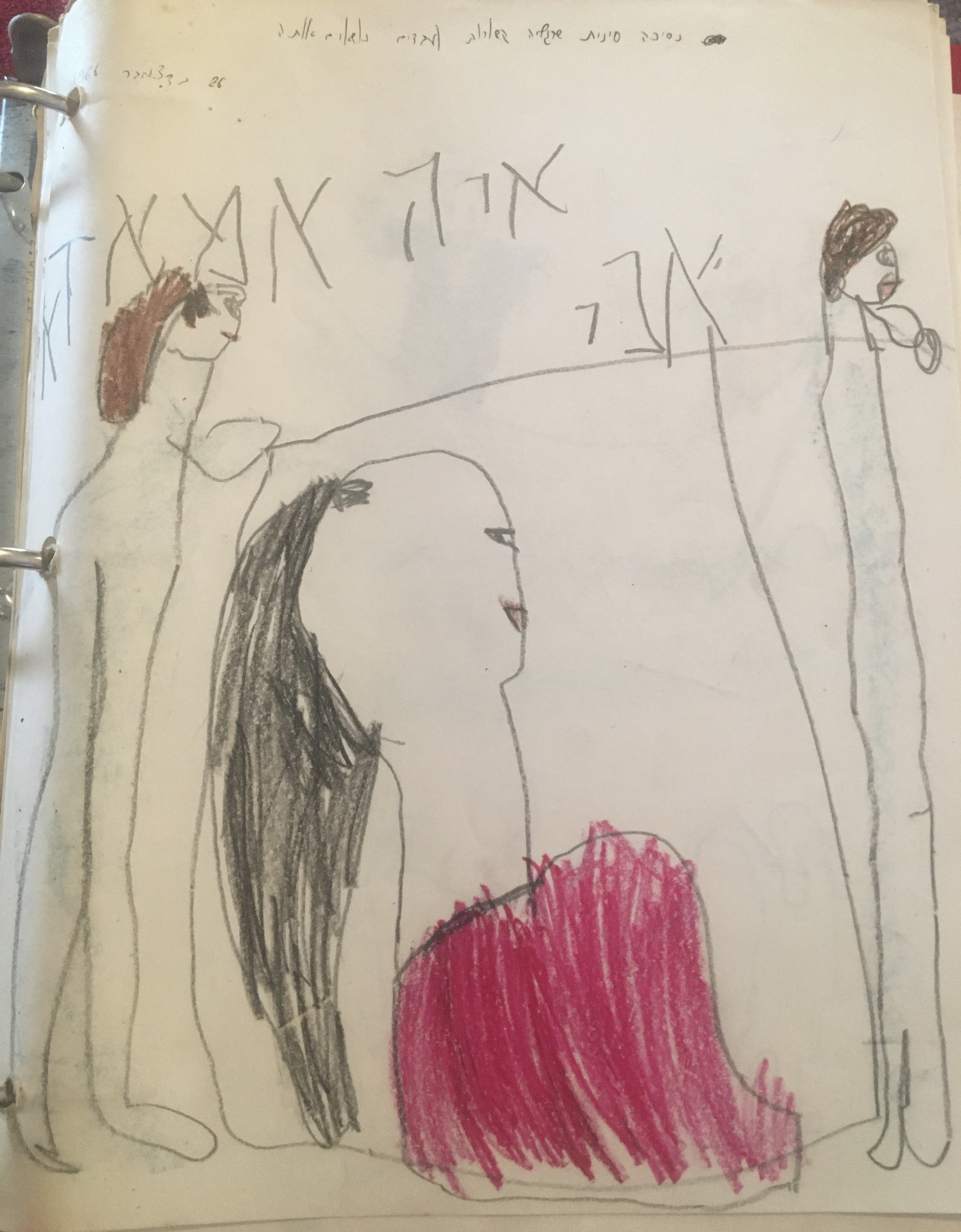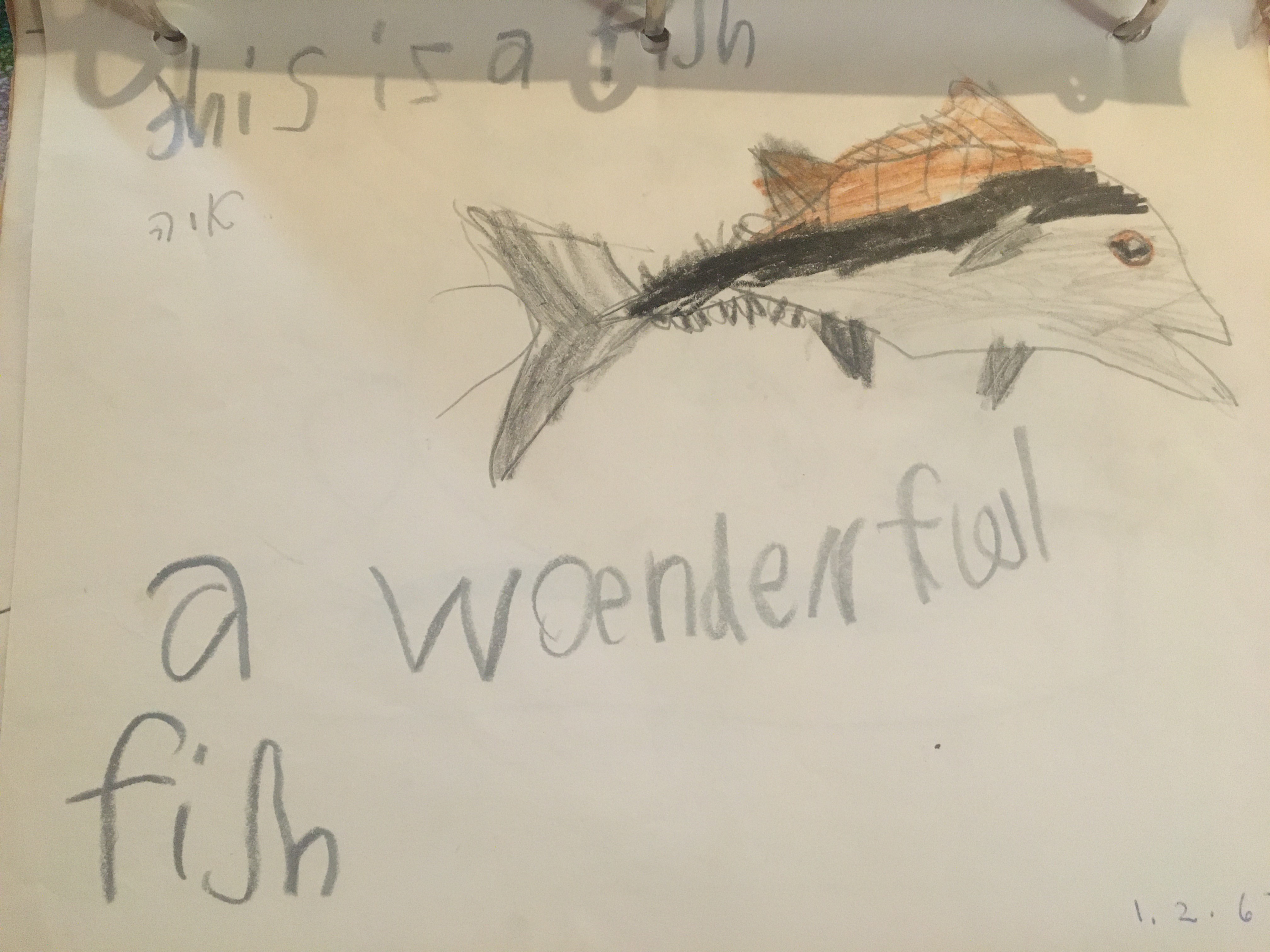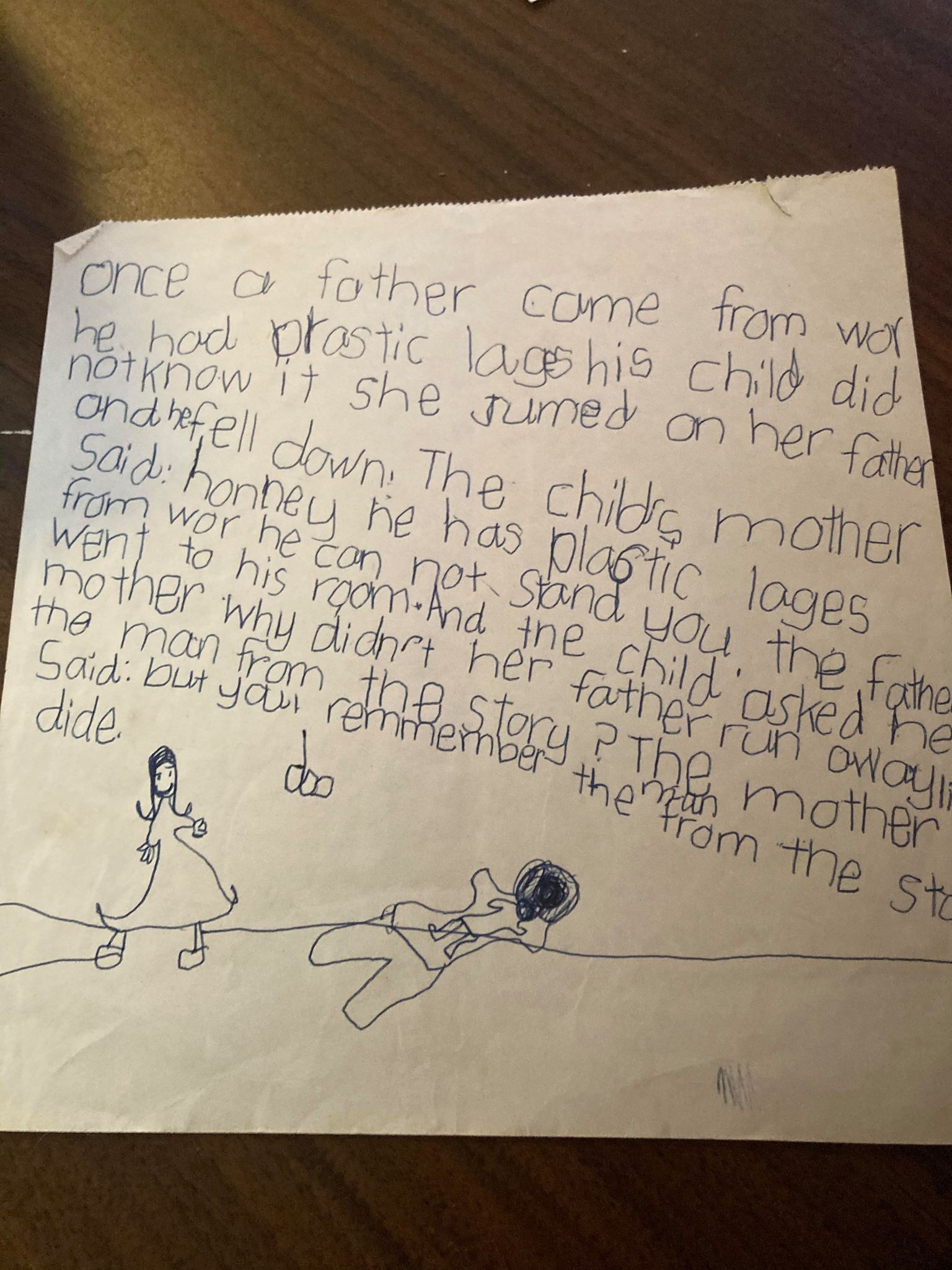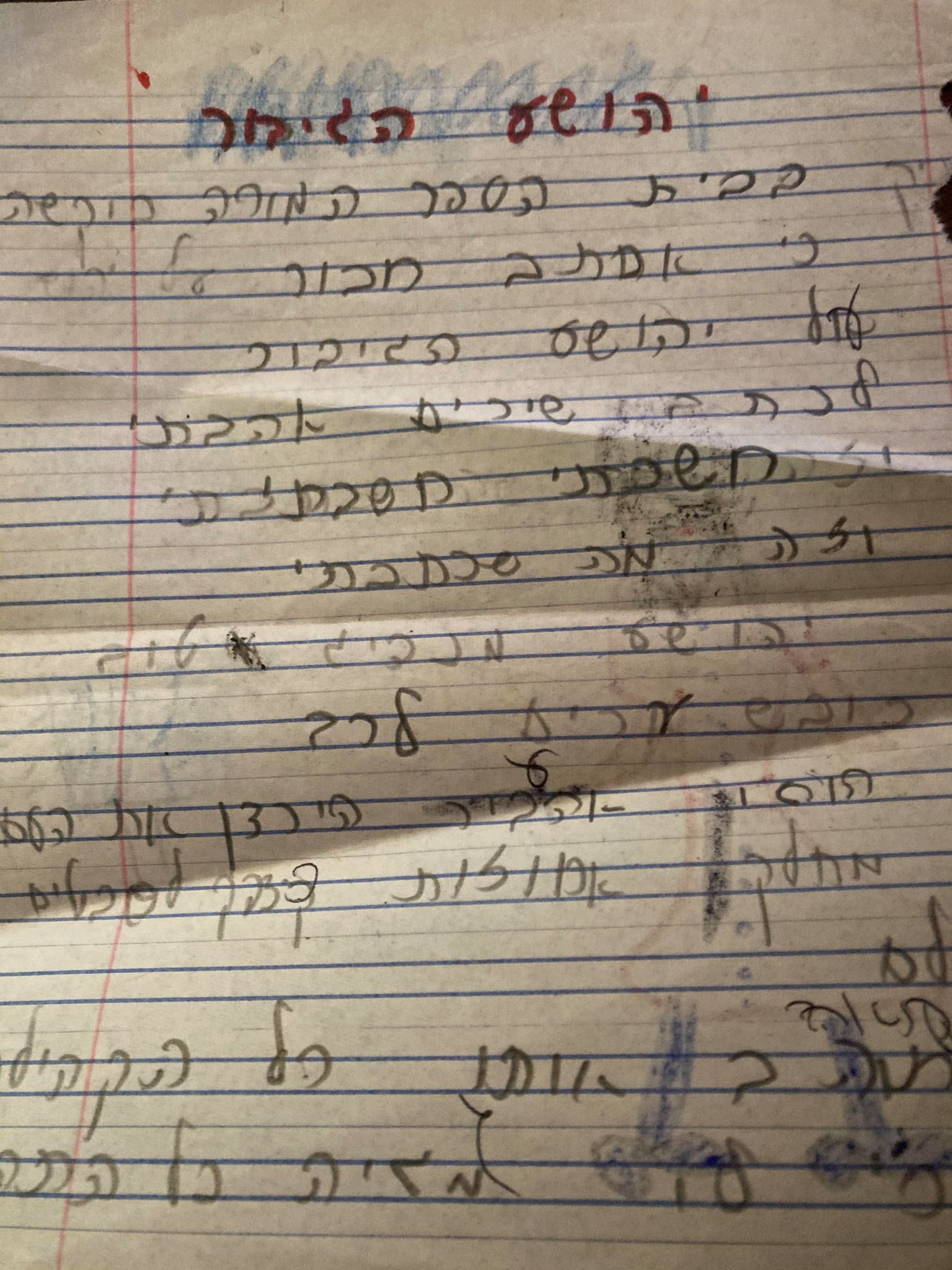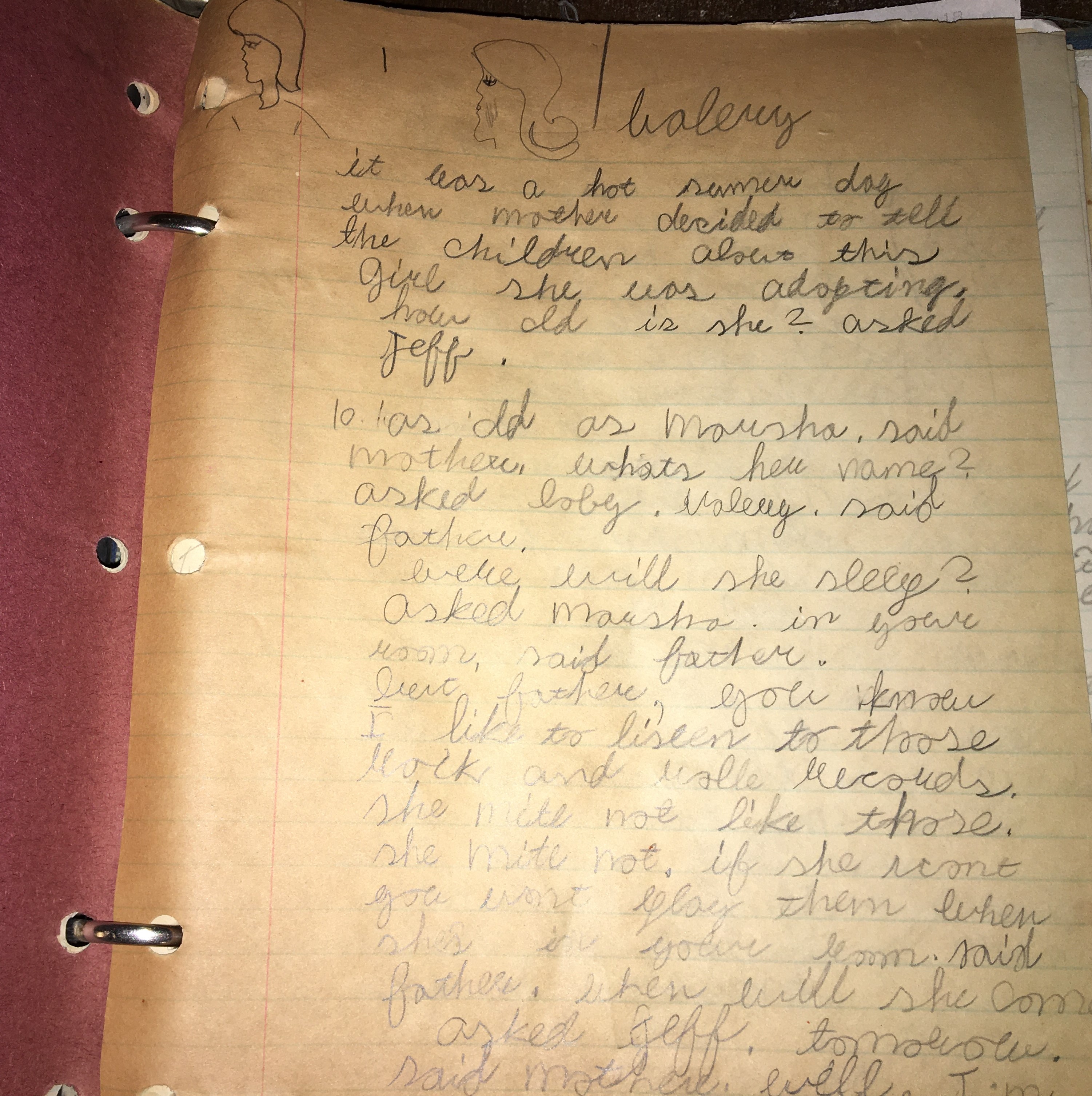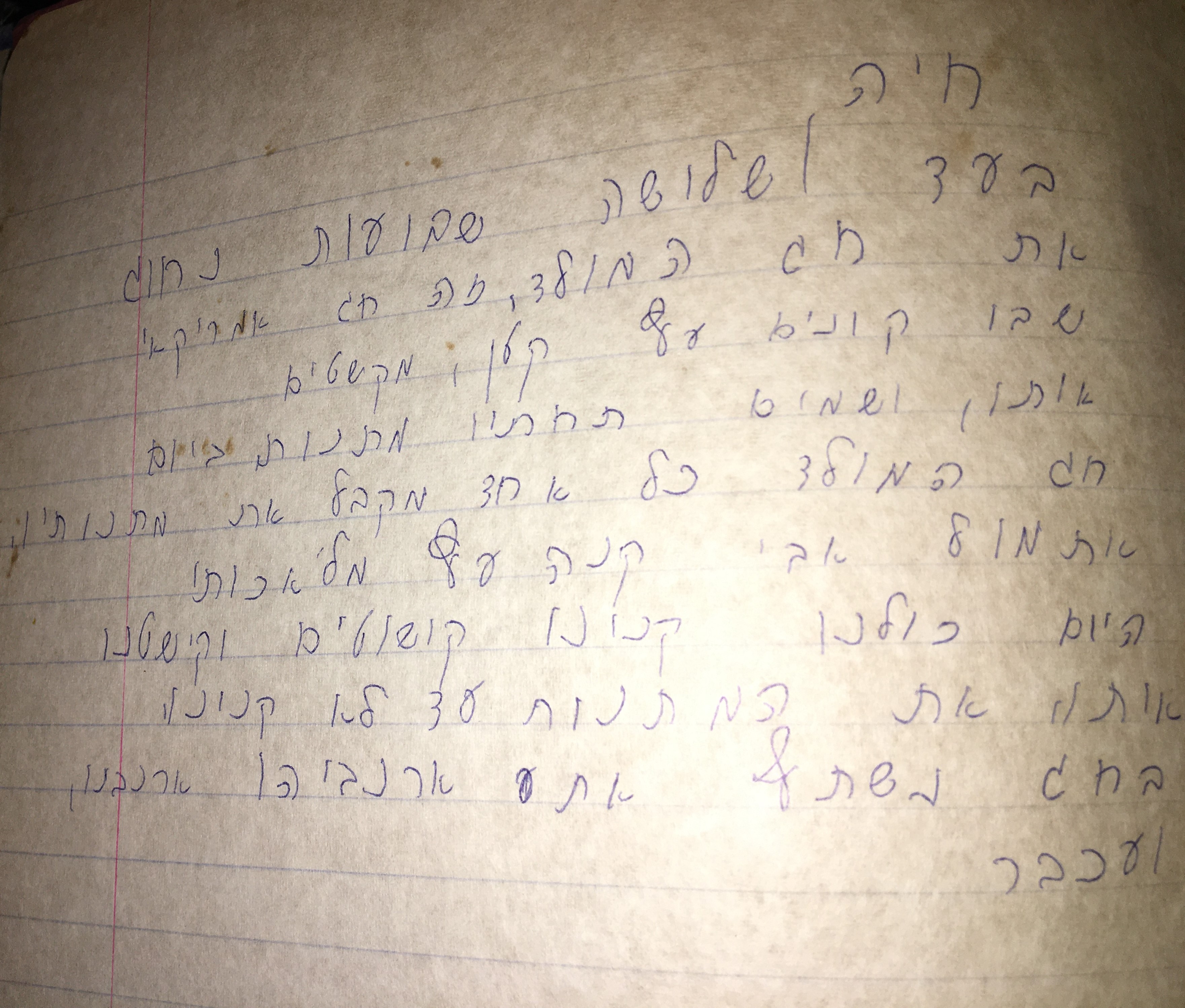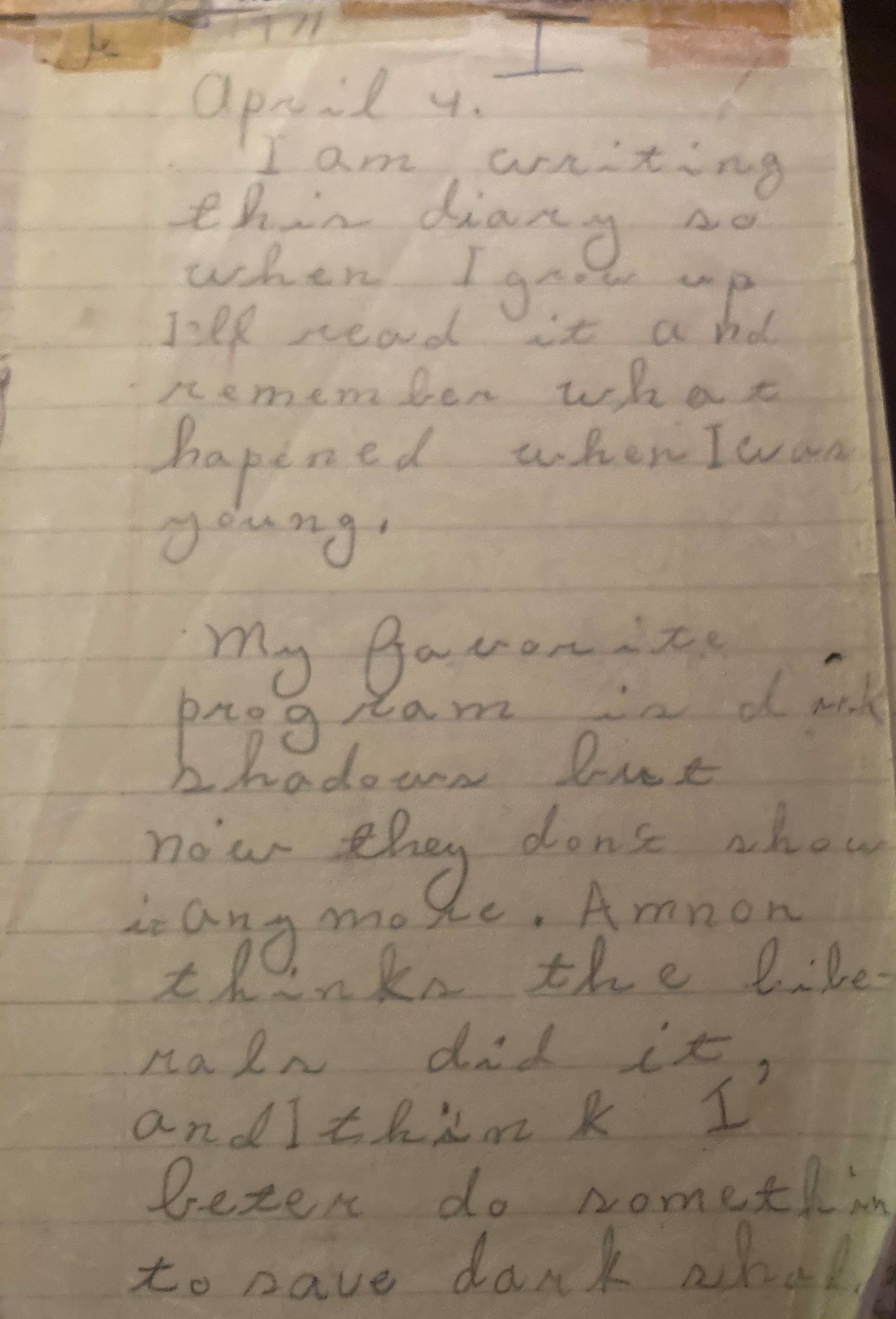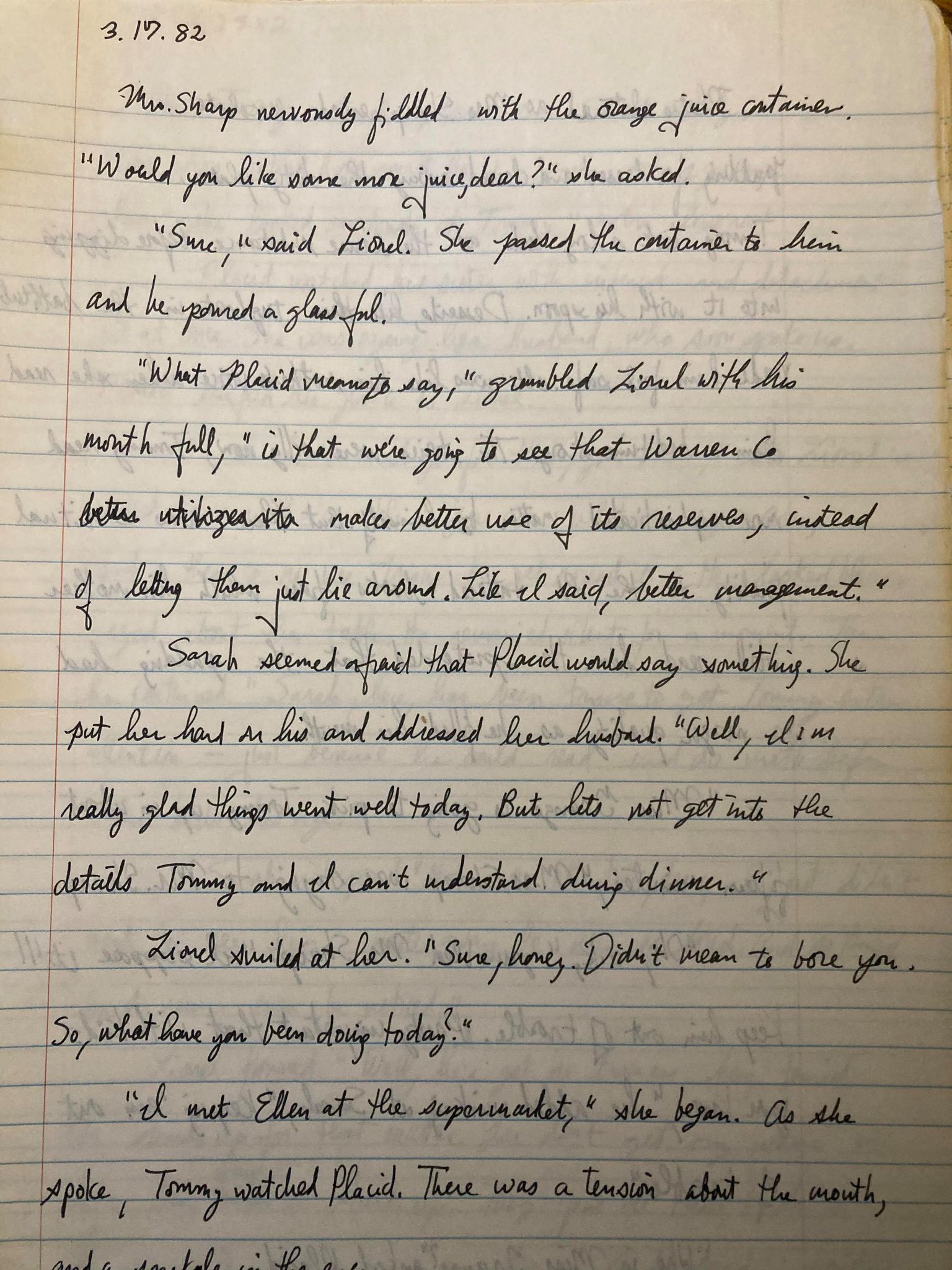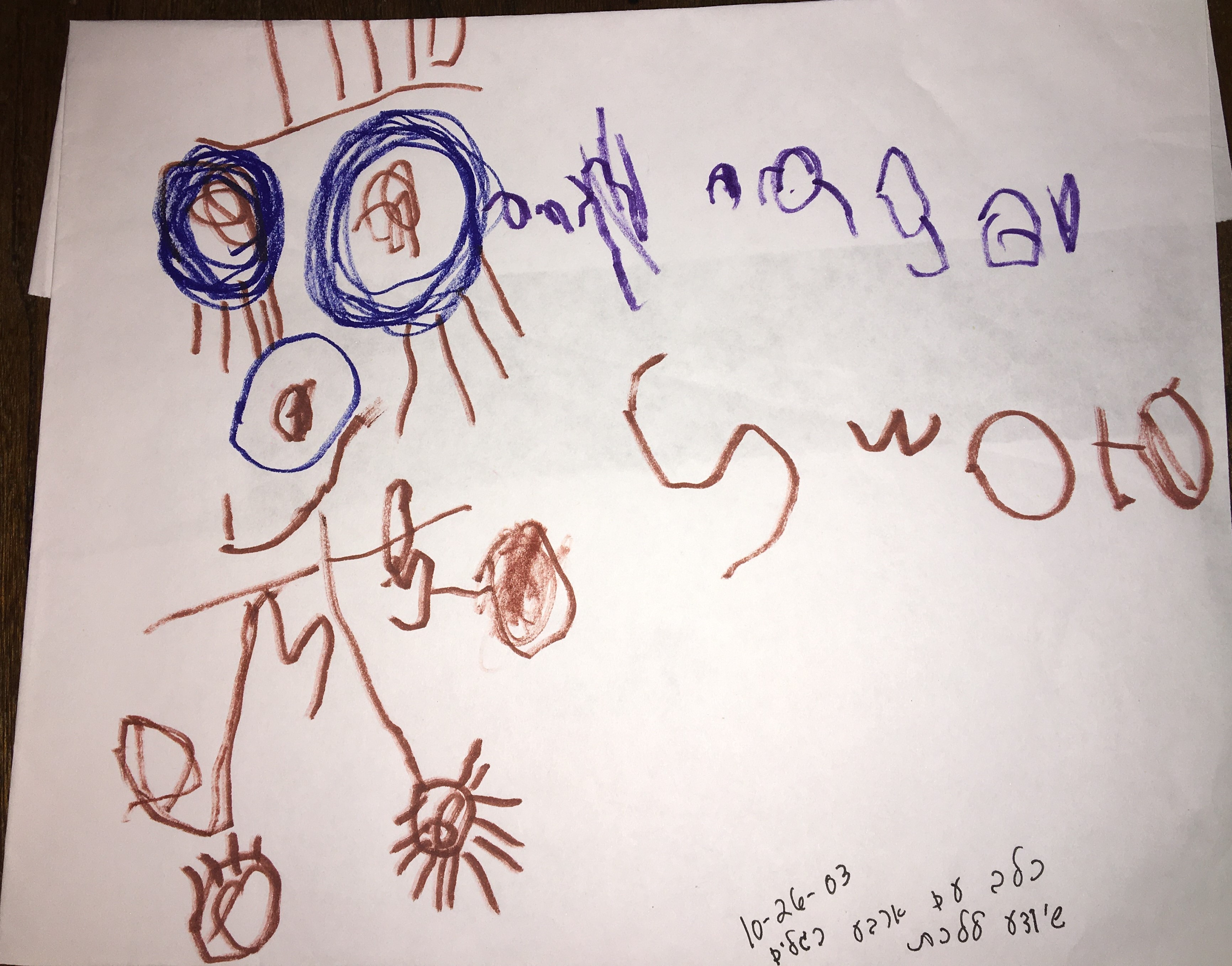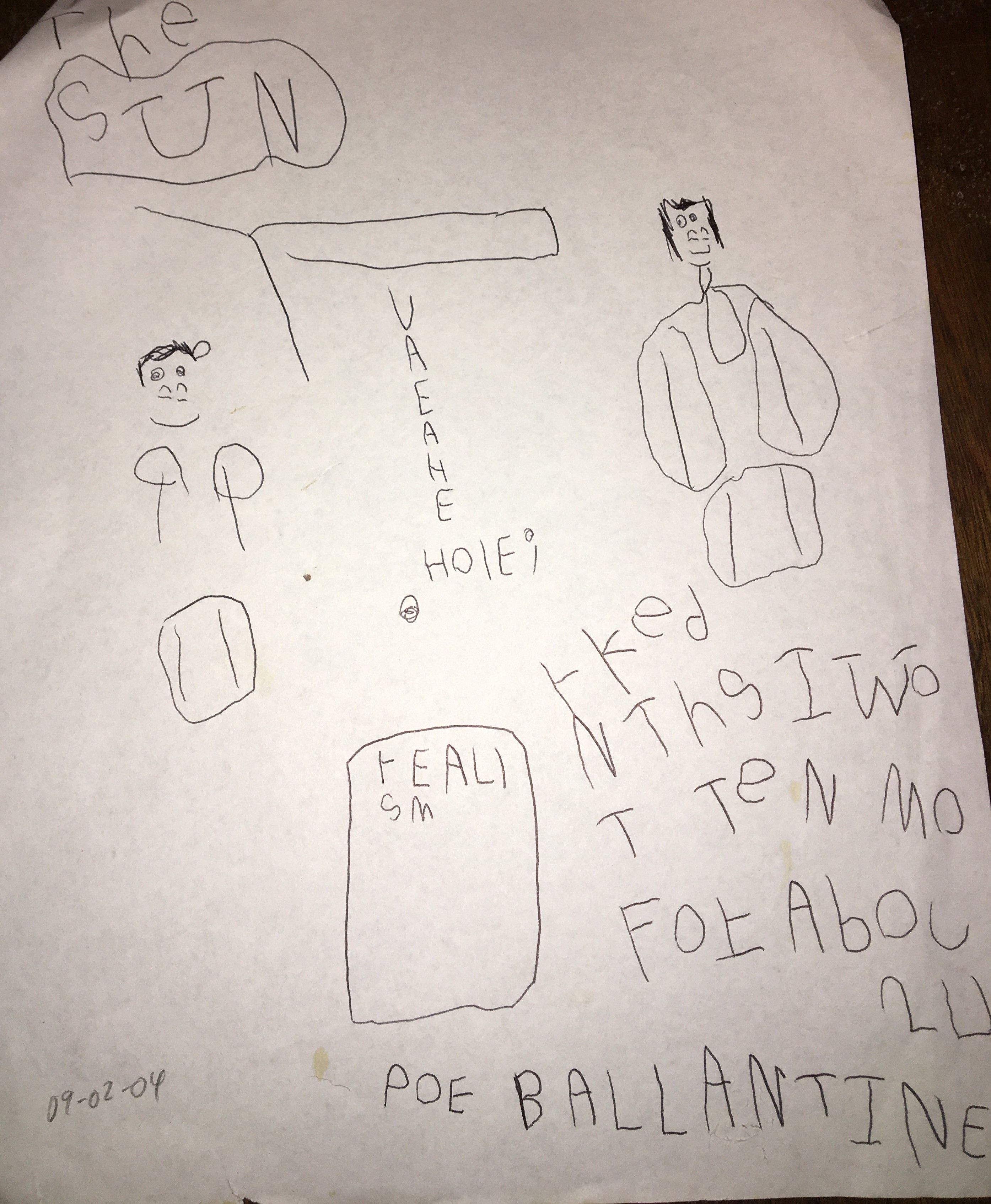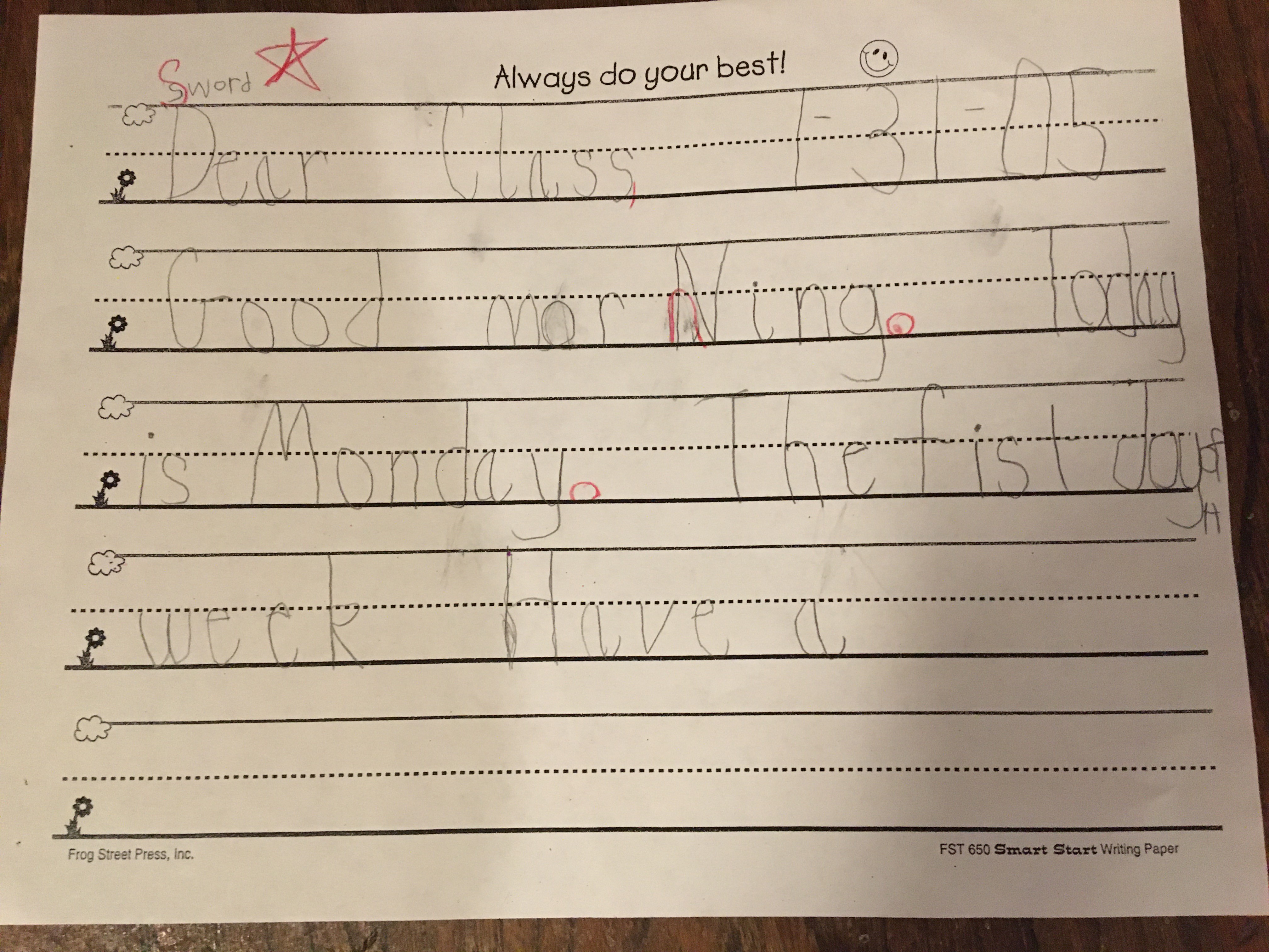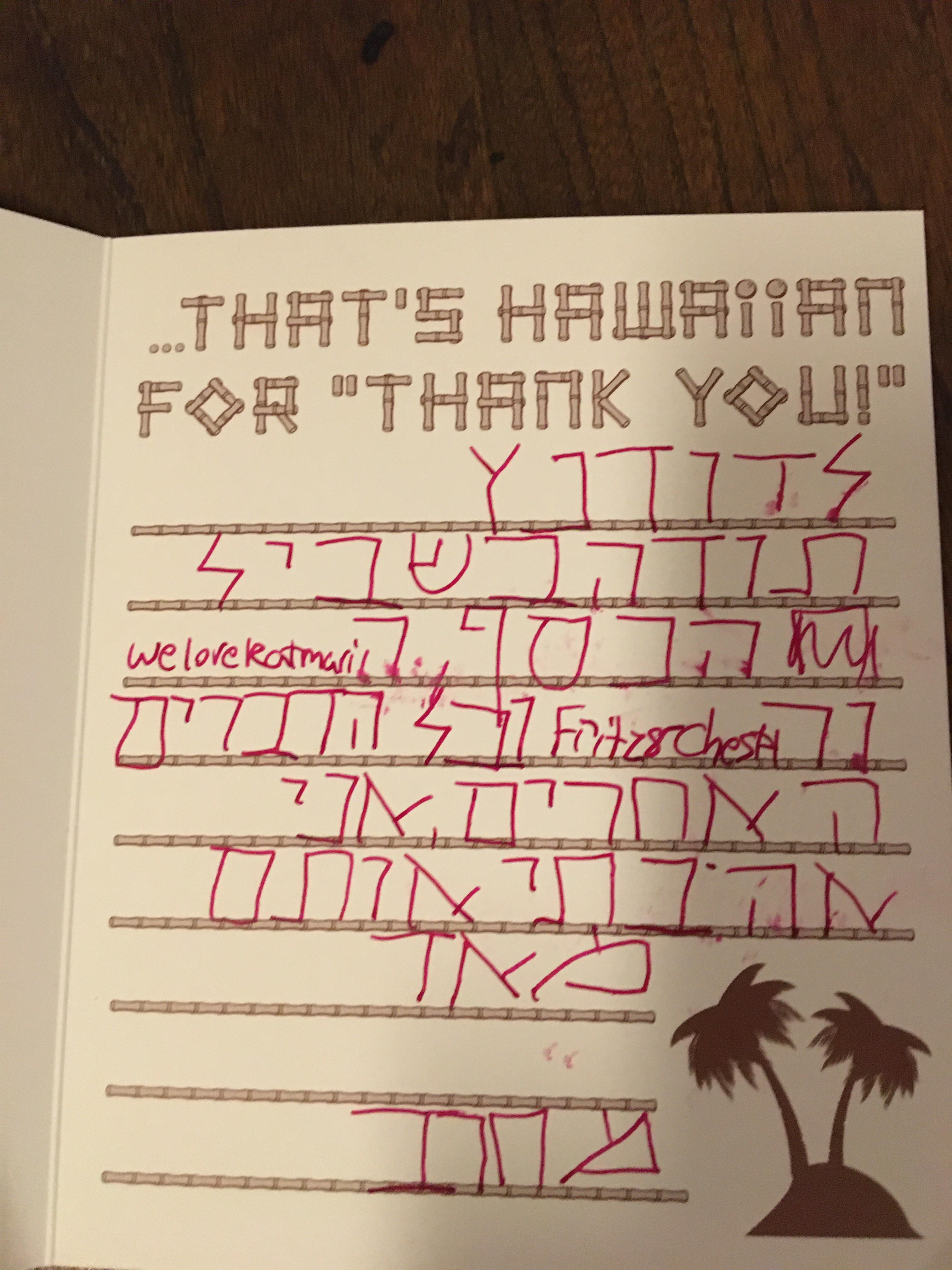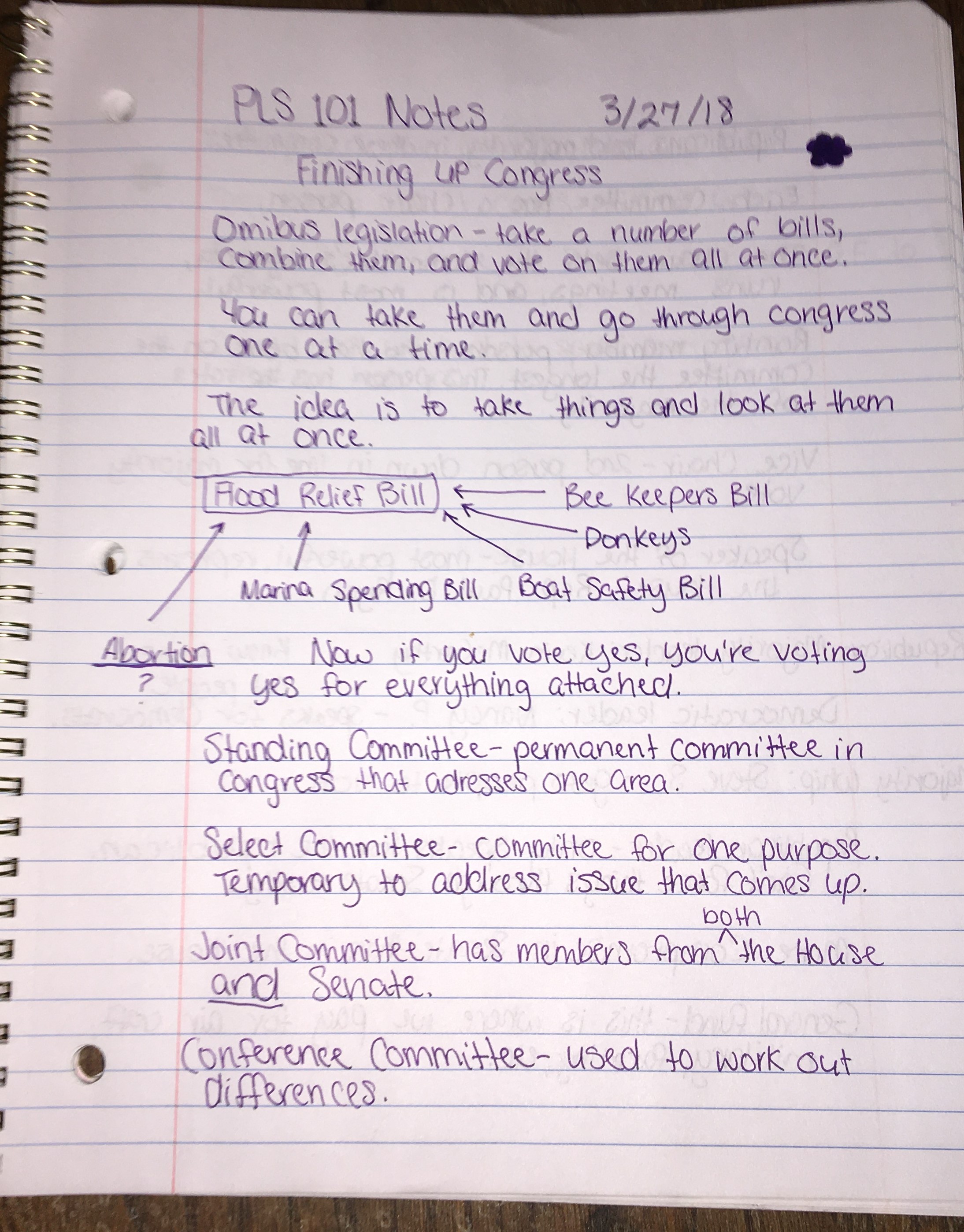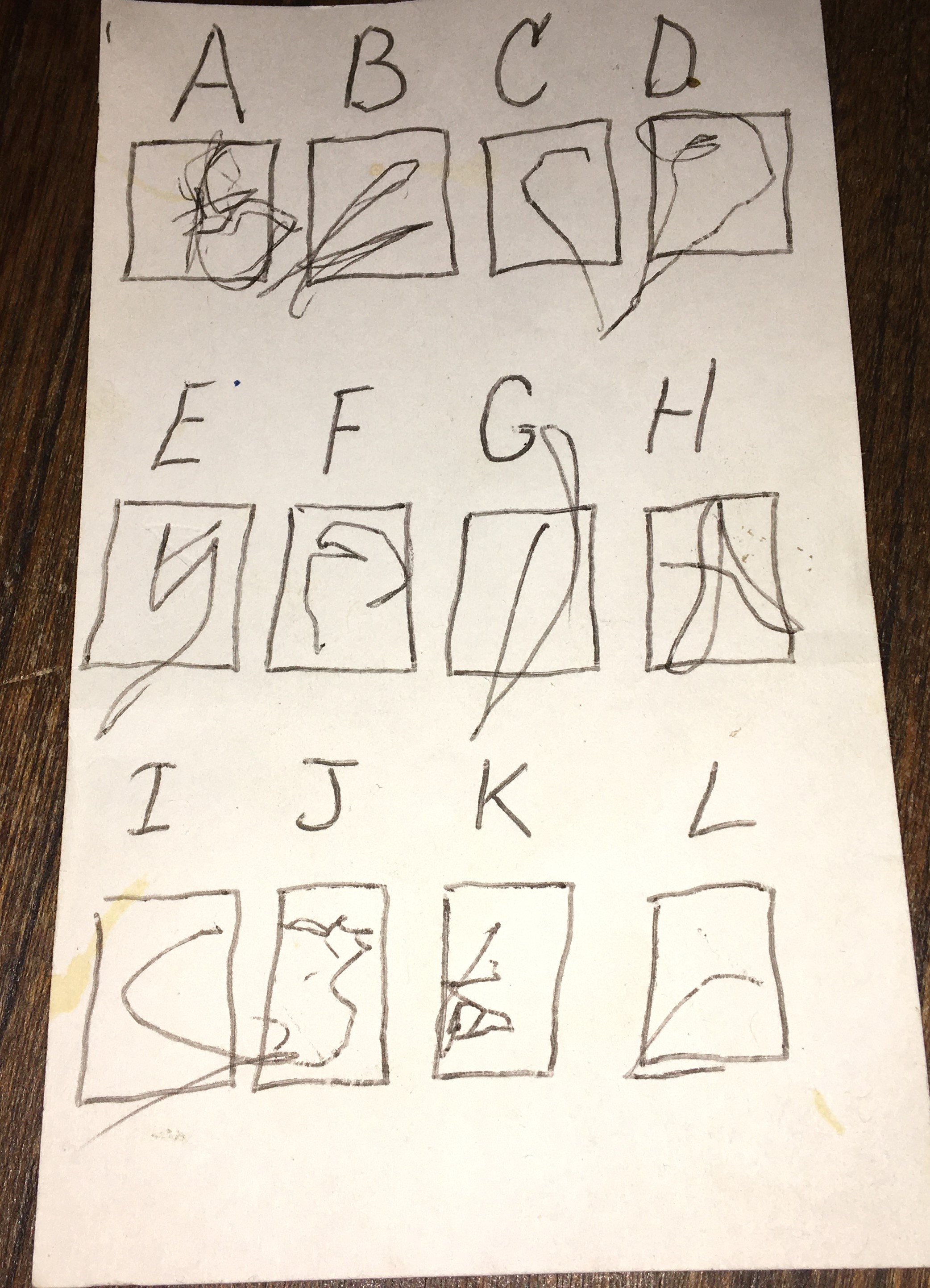Because I inherited the correspondence that belonged to my grandmother Klara Goldstoff Katz at the time of her death, the five generations will be counting from her mother, Mirla Goldstoff all the way to my daughter Sword Katz. I also include writing samples from my grandfather Benzion Katz, and from my mother Ora Katz, who are in my family tree, though not in direct bloodline from Mirla Goldstoff.
My paternal grandparents were Benzion and Klara Katz. Here is a copy of their marriage certificate. It is written in Polish.
On the back of the marriage certificate, my grandmother wrote in Hebrew: “Marriage certificate. They mention here that my mother is from the house of Horowitz.” My grandmother’s father was surnamed Goldstoff and he was a cloth merchant, but she was most proud of her maternal grandfather. He was the rabbi of a small village.
My grandfather was a lecturer at the University of Krakow at the time of his marriage. He had a doctorate in Philology. He knew Latin, Greek and ancient Persian, as well as Hebrew. However, when he got his Palestinian Citizenship Order in 1942, the document lists his occupation as “clerk”.
That is because for a very long time, there was no university position available, and my grandfather worked for the Jewish Agency, helping to bring Zionists to Palestine.
My grandmother Klara was also University educated. In her University attendance book, the part in Latin lists her name as Clara with a C, whereas the part in Polish has her as Klara with a K. Her signature looks as if she ran the two words Goldstoff and Klara together.
Here are some notes that my grandfather wrote about a book he was reading. The book was in Polish and was about poetry. My grandfather’s notes were in Hebrew, but a few words are also in Polish, so you can compare his Hebrew and his Polish handwriting.
Below is a handwriting sample of my grandfather Benzion Katz in Greek. There is also Hebrew writing on the page, so you can compare my grandfather’s writing in Hebrew to his writing in Greek.
While my paternal grandparents and my father were able to make it to Palestine, my grandmother’s parents were not so lucky. Here is a letter from my great grandmother to my grandmother that was censored by both the Germans and the British.
My grandmother Mirla writes: “We are healthy. The last message from you was in August. Please write every month. Dear Amus (diminutive for my father, Amnon). May God save all of you. We received sardines from Portugal. Kisses.” Attached to the letter from Mirla to Klara was something the British censor wrote:
I am guessing that despite the British prohibition on sending parcels to Enemy Territory through an intermediary in a neutral country, my grandparents managed to send the sardines to my great grandparents through Portugal. In that same group of letters, there are also those sent by my grandmother Klara to her mother, Mirla Goldstoff.
On the back of this was written in handwriting:
“We are healthy. We received coffee and sardines from Portugal. The death anniversary of Salek is on the first evening and first day of Sukkoth. We miss all of you. May God save you all.” Salek was my grandmother Klara’s younger brother. My Goldstoff great grandparents were not able to leave Poland in 1939 because Salek was ill. He had been studying chemistry and came down with leukemia. That is why my great grandparents perished in the Holocaust rather than escaping with my grandparents.
My father, Amnon Katz, grew up in Jerusalem from age four to adulthood. Here is a writing sample from him in Hebrew.
Here is one in English.
Here below is a sample of the handwriting of my mother, Ora Katz, in Hebrew with a small bit in English. This a recipe for making a light dough. “2 1/4 cups of flour, 1 teaspoon of baking soda, 110 grams of margarine or butter” — and here comes the English bit “1 stick”, then back to Hebrew: “3/4 cup of sugar (or a bit less), one egg, 1/4 cup of milk or juice (or water), a teaspoon of vanilla extract, the peel of a lemon. You mix the flour and baking soda, add the margarine (soft) the rest of the ingredients and quick knead the dough. Put the dough in the refrigerator for a few hours.”
Both my parents have always had neat and legible handwriting. But I had some hand eye coordination problems that they did not. Also, during my childhood we kept switching countries and even within the same country, we moved to different states. Different systems of writing competed for my attention, not so much simultaneously but one at a time.
My earliest writing was in Hebrew. This is a picture I drew of a Chinese lady whose feet were bound and who was being carried by slaves. The explanation of the picture is written by my father, but the words I wrote were just: “I, Aya, mother.”
I was already writing when I was five in Israel. However, when I started first grade, it was in Romeoville, Illinois. I started school there not knowing any English. They taught us to write phonetically. In the illustration below I wrote “This is a fish, a wonderful fish,” using the phonetic writing system I was taught. I also signed my name in Hebrew handwriting. This was after the first semester in Romeoville, Illinois.
But by the next year, in Seattle, Washington, the teacher did not want us to write phonetically. However, I still wrote a lot of words the way they sounded, so my spelling was atrocious.
The next year, I was back in Israel for third grade. Here are some samples of my writing. Spelling was still a bit of a problem.
For fifth grade, we returned to the States, this time in Ann Arbor, Michigan. I was expected to write in cursive, but my new cursive writing was pretty hard to read. It was almost illegible.
At the same period, my Hebrew looked like this:
By the spring of that year, father advised me that it would be best if I wrote the cursive letters as I was taught them, but without joining the letters. This made it seem as if I was writing cursive, but my writing was much more legible.
By the time I was in law school my writing looked like this.
My daughter Sword has better had eye coordination than mine. Here is a dog she drew when she was four years old. She signed her name. She also tried to write “dog” in English, but it was right to left.
She started writing very early, copying things she happened to see written down. Notice that in this sample, she recognizes letters and then copies them down without regard to lower case or upper case in the original. I used to subscribe to a literary magazine called The Sun. Sword attempted to reproduce the entire front cover, pictures and writing and all. Notice the way she wrote “realism”. This was not a pictorial copying of the letters. It was recognizing the letters and then disregarding case. She was in kindergarten.
Here is a sample from school. The students were asked to copy off the board. But Sword disregarded case by using a capital N in the middle of the word “morning”. This was partly because she could already read and regarded case as interchangeable.
Here is a thank you letter in Hebrew Sword wrote her uncle for her seventh birthday. At this point Sword’s English writing was far advanced over her Hebrew.
Here is what Sword’s handwriting looked like by the time she was in college. These are notes she took in a political science class.
My adopted chimpanzee son Bow, brought up together with Sword, has trouble writing his letters.Here Bow was trying to copy the letters Lawrence wrote out for him inside the boxes. Bow’s letters are not very legible, but you can see he was trying.
Here is a discussion of all of these documents with handwriting expert Kate Gladstone and Julia Hanna.
RELATED
https://www.pubwages.com/25/my-parents-early-childhood-memories-and-zionism

